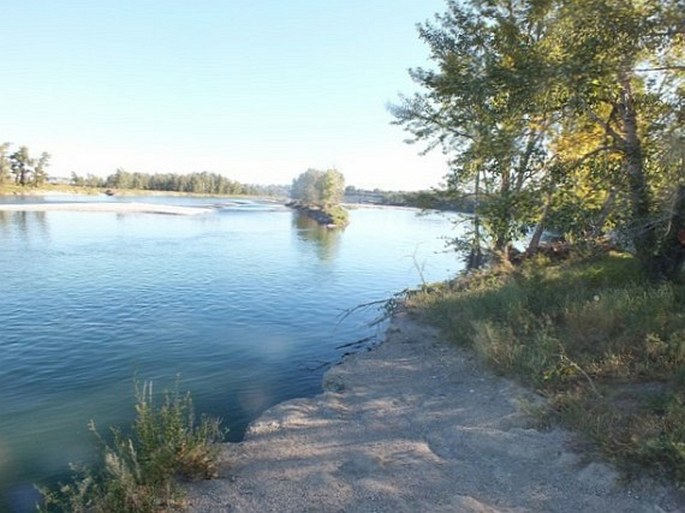Beaverdam Flats Park
Bow River in southern part of Calgary runs directly from north to south and Beaverdam Flats Park lies on eastern side of the river.
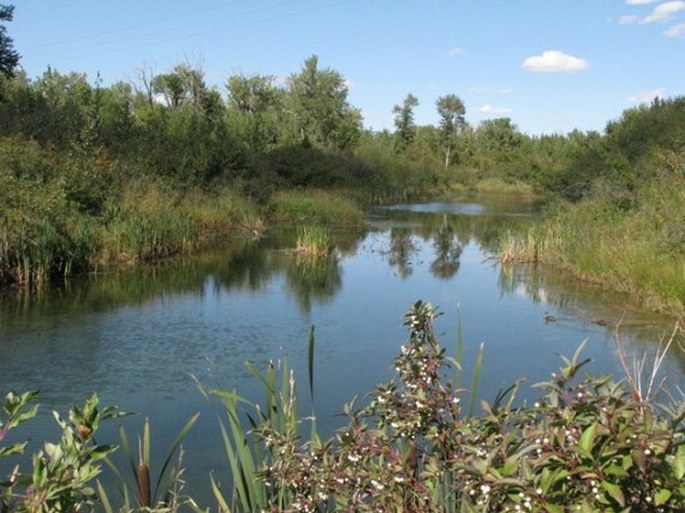
As most of Bow River parks, it is reachable by the bicycle path which is connecting all locations along the river. Of course pedestrian access is from a parking lot on the top of the escarpment. The park itself is a lowland park on the floodplain, right under steep escarpment, displaying the sandstone of the Porcupine Hills formation. The area was most likely originally an island separated from the main river bed by a side channel which presently exists as an inlet only and pedestrians have to cross it on one of two bridges. The landscape of the park is constantly changing due to the action of the river. Spring flood of 2013 proved the point as it took out both bridges and reshaped the whole park.
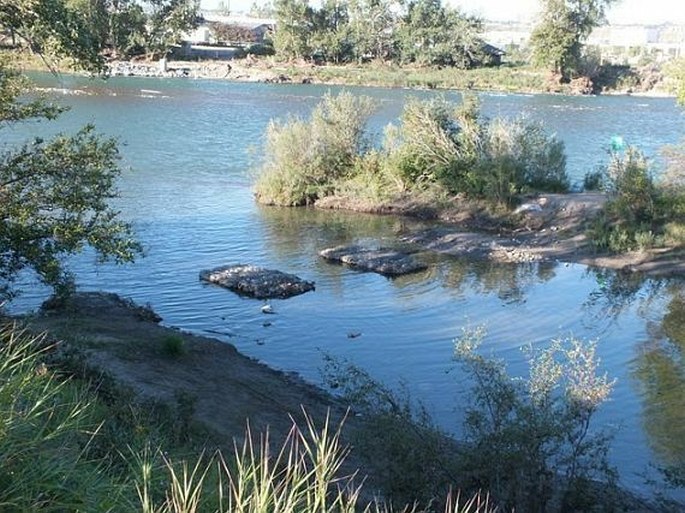
Name of the park is self-explanatory. The park is a favourite birding area for its varied bird life. The river by itself is flowing most of the winter and hosts a congregation of waterfowl, geese, many species of ducks in large numbers, some uncommon as Barrow’s Goldeneye (Bucephala islandica) or Harlequin Duck (Histrionicus histrionicus), Bald Eagles (Haliaeetus leucocephalus) are nesting here and so are Osprey (Pandion haliaetus). In the inlet with calm water and marsh, you can see Sora (Porzana carolina) and Wilson’s Snipe (Gallinago delicata).
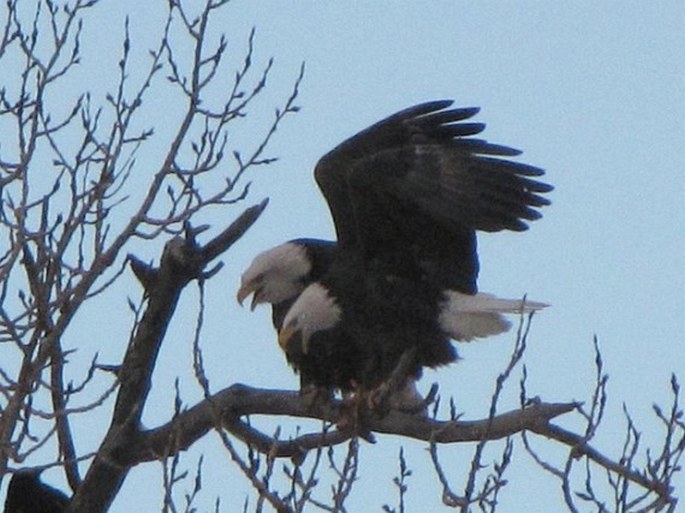
The whole flatlands represent the riverine forests with its largest tree, Balsam Poplar (Populus balsamifera), including a few Quaking Aspen (Populus tremuloides), lots of Water Birch (Betula occidentalis), some White Spruce (Picea glauca) and one large specimen on the steep slope of the escarpment of Alaskan Birch (Betula neoalaskana) which is quite rare in this area.
Shrubbery is quite rich here. Red-osier Dogwood (Cornus sericea), Silverberry (Elaeagnus commutata), Chokecherry (Prunus virginiana), Canada Buffaloberry (Shepherdia canadensis) and several species of willow (Salix spp.).
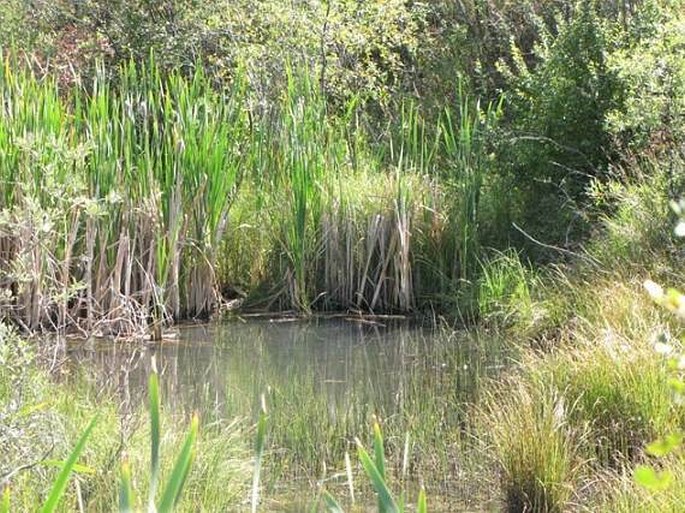
One specialty can be found here and that is Mountain Alder (Alnus incana subsp. tenuifolia), known from very few locations in Calgary. One odd shrub grows here as well, Wild Indigo (Amorpha fruticosa) of the Legume family.
Among herbaceous flora we have to mention two species of gentian, Macoun’s Fringed Gentian (Gentianopsis macounii) and Prairie Gentian (Gentiana affinis), whose habitat was totally destroyed by the 2013 flood. In the same area you were able to find Sticky False Asphodel (Triantha glutinosa).
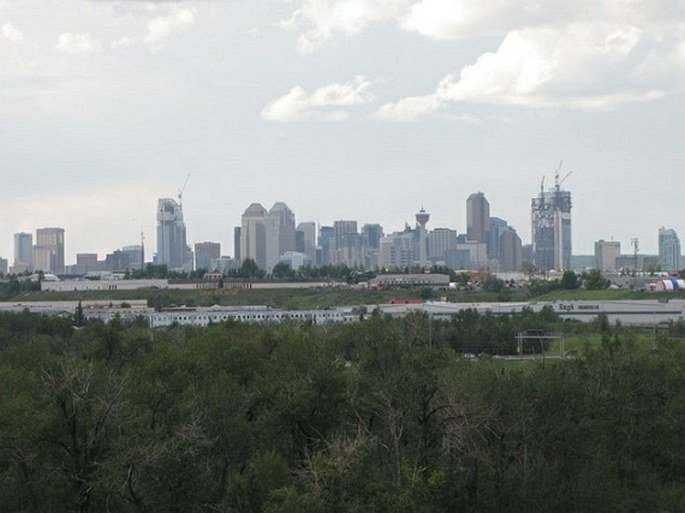
Calgary, Carburn Park
Carburn Park is located just south of Beaverdam Flats and it is also a flood plain park with remnants of the riverine forest with Balsam Poplar (Populus balsamifera). When one says remnants, it has to be explained. In order to germinate seeds of Balsam Poplar the area has to be flooded on annual basis (not meant a destructive flood as our 2005 and 2013 floods).
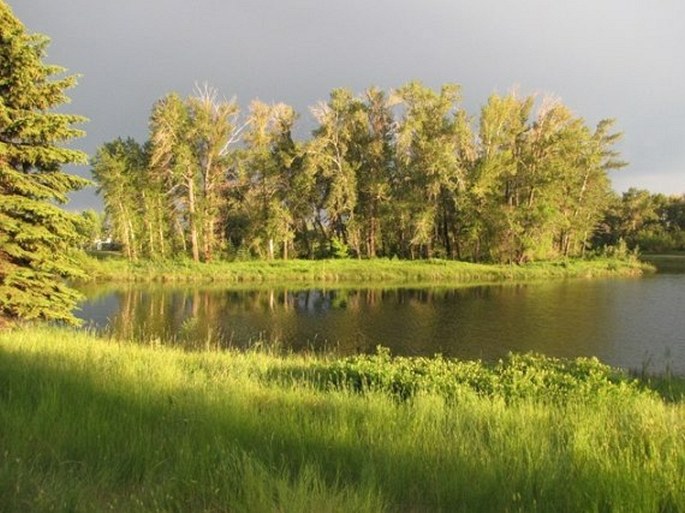
However, Bow River is regulated with a series of dams and flooding occurs only in the destructive way, not the seasonal mild wet season. Therefore, the poplars are not being replaced and our old specimens are growing too old, for this species. Nevertheless you can still find fine specimens of this tree along the river. Right from the beginnings of Calgary, the river gravel was a valuable commodity and even this park started as a commercial gravel pit, turned eventually to the city and the Parks Department. Three large ponds in this park were originally these gravel pits. Now they serve as calm water for local wildlife, especially water birds. Therefore, it became the favourite birding destination. You watch the birds on the river and on the ponds as two separate habitats. You can see Yellow Warbler (Dendroica petechia), Baltimore Oriole (Icterus galbula), Great Horned Owl (Bubo virginianus), Red-wing Blackbird (Agelaius phoeniceus), Common Loon (Gavia immer) or Pied-billed Grebe (Podilymbus podiceps) and of course ducks of many species.
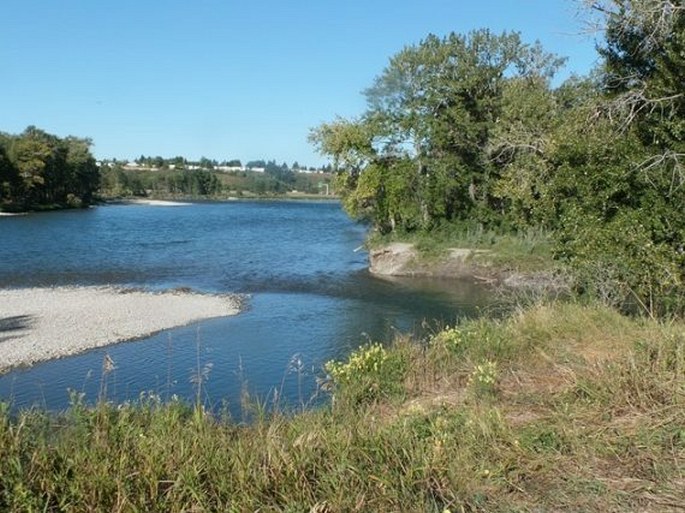
As far as flora is concerned Quaking Aspen (Populus tremuloides) and White Spruce (Picea glauca) are present, with ubiquitous Water Birch (Betula occidentalis). For herbaceous plant you can find 3 species of Horsetail (Equisetum hyemale, E. laevigatum and E. palustre), Graceful Cinquefoil (Potentilla gracilis), Wild Blue Flax (Linum lewisii), Seneca Snakeroot (Polygala senega), Macoun’s Fringed Gentian (Gentianopsis macounii), selection of Asters (Symphiotrichum spp.) and very special plant, False Gromwell (Onosmodium bejariense var. occidentale). Despite of gross damage by 2013 flood, False Gromwell’s habitat was only partially silted over and the plants survived, although they wouldn’t bloom in 2013. The flood resculpted the shore of the river and in one place a gravel bar with well developed vegetation, disappeared completely.
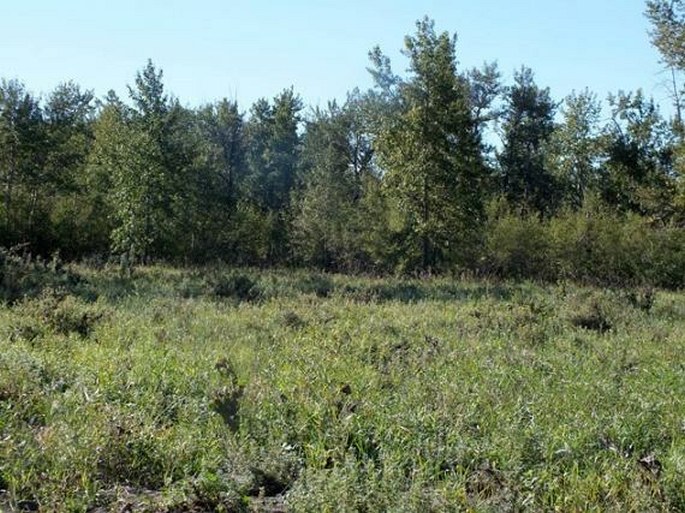
Unfortunately this park with its human history hosts variety of invasive weeds, especially Chick-pea Milkvetch (Astragalus cicer), which rims most of the trails; Yellow Clematis (Clematis tangutica) is a problem as well, together with Lesser Burdock (Arctium minus) and Creeping Bellflower (Campanula rapunculoides).
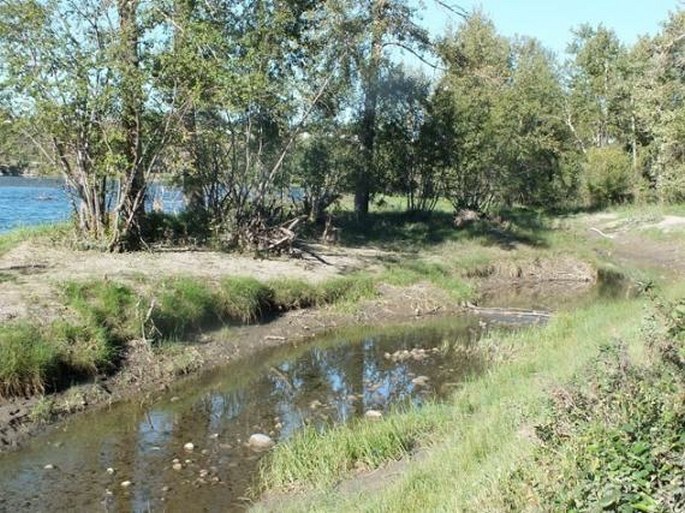
Native plants:
Allium cernuum – Nodding Onion
Alnus incana subsp. tenuifolia – Mountain Alder
Amorpha fruticosa – Wild Indigo
Betula neoalaskana – Alaskan Birch
Betula occidentalis – Water Birch
Cirsium flodmanii – Flodman’s Thistle
Cornus sericea – Red-osier Dogwood
Elaeagnus commutata – Silverberry
Epilobium ciliatum – Northern Willowherb
Equisetum hyemale – Horsetail
Erigeron glabellus – Smooth Fleabane
Eurybia sibirica – Arctic Aster
Gaillardia aristata – Blanketflower
Gentiana affinis – Prairie Gentian
Gentianopsis macounii – Macoun’s Fringed Gentian
Heterotheca villosa – Hairy Golden-aster
Hieracium tectorum – Hawkweed
Hieracium umbellatum – Hawkweed
Hippuris vulgaris – Common Mare’s-tail
Hordeum jubatum – Foxtail Barley
Linum lewisii – Wild Blue Flax
Monarda fistulosa – Wild Bergamot
Onosmodium bejariense var. occidentale – False Gromwell
Phalaris arundinacea – Reed Canarygrass
Picea glauca – White Spruce
Platanthera hyperborea – Northern Green Bog Orchid
Poa compressa – Canada Bluegrass
Polygala senega – Seneca Snakeroot
Populus balsamifera – Balsam Poplar
Populus tremuloides – Quaking Aspen
Potentilla gracilis – Graceful Cinquefoil
Prunus virginiana – Chokecherry
Rorippa islandica – Bog Yellowcress
Rumex crispus – Curled Dock
Rumex triangulivalvis – Willow Dock
Shepherdia canadensis – Canada Buffaloberry
Solidago missouriensis – Missouri Golderod
Symphiotrichum laeve – Smooth Blue Aster
Triantha glutinosa – Sticky False Asphodel
Typha latifolia – Cattail
Veronica catenata – Water Speedwell
Introduced plants:
Arctium minus – Lesser Burdock
Astragalus cicer – Chick-pea Milkvetch
Campanula rapunculoides – Creeping Bellflower
Clematis tangutica – Yellow Clematis
Cynoglossum officinale – Common Hound’s-tongue
Erucastrum gallicum – Dogmustard
Hyoscyamus niger – Black Henbane
Linnaria vulgaris – Butter-and-eggs
Onobrychis viciifolia – Common Sainfoin
Prunus tomentosa – Nankin Cherry
Ranunculus acris – Tall Buttercup
Silene latifolia – White Campion
Thlaspi arvense – Stinkweed
